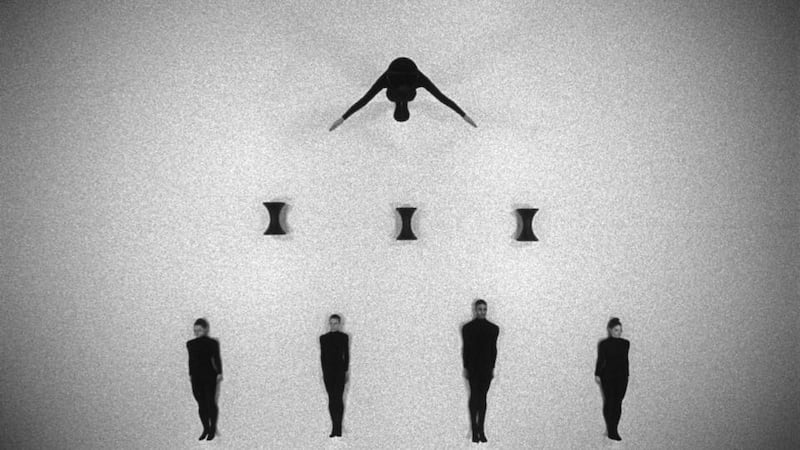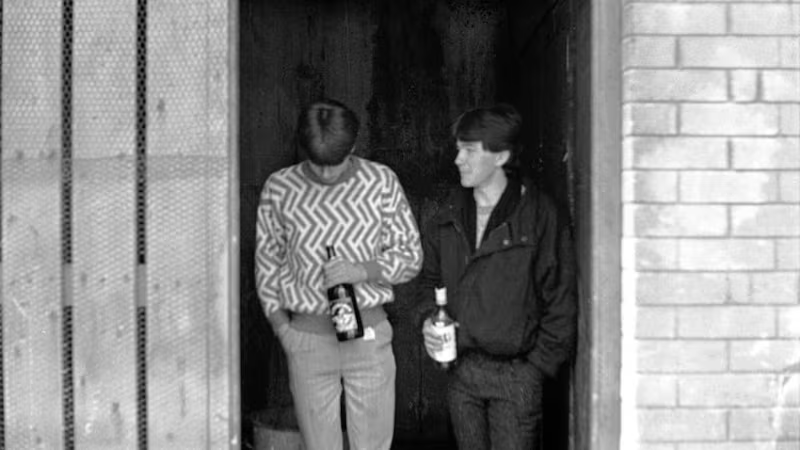Four film works – Duncan Campbell
Imma, Dublin
****


Dublin-born artist Duncan Campbell has won the Turner prize, after being the odds-on favourite to win in the run up to the announcement on December 1st. Fortuitously, the first major show of his work, and the only one currently on display internationally, is running at Imma, where you can see four of his films, including the one that earned him the Turner, It for Others. The artist will also be speaking at the gallery on January 31st.
Why have we not seen more of him in the city of his birth? Largely because he quickly moved on, first to Northern Ireland, where he studied at the University of Ulster, graduating in 1996, and then to Glasgow to complete a master of fine arts degree at the Glasgow School of Art. He has been based in Glasgow since, one of a thriving, slightly alternative contemporary arts community.
Given that three of this year's Turner-shortlisted artists are strongly associated with Glasgow, perhaps that alternative, left-of-centre status is fading. Or perhaps not: the shortlisted show has proved contentious, not for prompting outrage or dismay, but for its perceived dullness. Only one artist, Ciara Phillips, allows the light in. The others ask us to peer at screens or display cabinets in the dark (some, including Campbell, for extended periods of time). All opt for varieties of cut-and-paste strategies, representing and remodelling the limitless ocean of archival matter so readily accessible in the digital age.
At 42, Campbell is the oldest and most established of the four nominees, and there is a curiously retrospective character to his work. This is not just for its use of historical, archival material and subjects, but because his deconstructionist agenda inevitably recalls poststructural critical theory. You may have thought poststructuralism had gone away, but it hasn’t. It’s continued to thrive in art schools and as a curatorial catch-all. When cynically employed, it is a convenient, superficial means of rationalising almost anything.
Campbell is serious about it and believes in it as a methodology. The oddness of his films, which can disconcert and occasionally irritate, is deliberate to the extent that he is out to disrupt any conventional narrative readings.
While he uses a great deal of archival material, he also invents and fictionalises. As art films, they have a special dispensation not to slot into any mainstream category. Their strong factual content and subjects may seem to angle them towards documentary, but he not only excuses himself from any presumed obligation to produce a documentary per se, but he also argues that any claim to meet such an obligation would be unfounded. There is no one, indisputable true version of anything. The archives are themselves loaded constructs.
His own description of his works as essay films seems appropriate. Bernadette (2008) is a portrait of Bernadette Devlin McAliskey, but one like no other. As he sees it, the film is as much about the existing media representations of McAliskey as it is about her. The dominant narratives, he has said, present her as a Mother Courage figure, a plucky young woman who won through, or as a personification of the republican position in the republican-unionist divide.
In fact, he argues, her analysis of Northern Ireland, as with many nationalist political activists, viewed it in terms of a class struggle with a colonial dimension.
The peace process essentially parked those issues, putting nationalists into government and leaving sectarian divisions of identity intact. The result, Campbell suggests, is that McAliskey is “a frozen icon”, forever prone to misrepresentation. Not that he claims to know the “real Bernadette”. In quite a subtle way, he tries to indicate her unspoken, internal life. It may seem perverse, but he is against clarity and in favour of uncertainty when it comes to defining her actions and motives.
The most recently made film in the exhibition, It for Others (2013), takes as its starting point a 1953 documentary, Statues Also Die (Les Statues Meurent Aussi), by two highly regarded French film- makers, Chris Marker and Alain Resnais. It's a pioneering work, which analyses the way African artefacts were robbed of their meaning and reconfigured in an alien, western context when taken and displayed in the British Museum.
There was some controversy when Campbell didn't manage to get permission to film the same artefacts in the museum, but the issue is not clear-cut, and the museum's director, Neil MacGregor (the man who came up with the widely imitated History of the World in 100 Objects format), is a notably sympathetic individual.
Predictably, in any case, It for Others is not a remake of Statues Also Die, nor a critique of it. One of its four constituent sections does address the same artefacts and the controversial issue of repatriation. The others take off in different directions to explore how the basic phenomenon raised in the earlier film – how the purpose and meaning of objects, actions and images are lost, misused, travestied or diminished – is relevant way beyond a specific colonial context in the wider cultural arena.
The process of relentless commodification plays a major role: at worst, at a certain point the monetary value of a work of art eclipses any other claim it has on our attention. Campbell's ways of dealing with these ideas are inevitably oblique – a strange, vintage-looking dance sequence choreographed by Michael Clark that animates ideas on commodity exchange from Das Kapital; a startling succession of food containers – but consistently engaging. There's a slight jolt when he looks at the uses of an IRA propaganda image in the same cool, non-judgmental way.
It for Others has been widely seen and well received, yet, like the work in Campbell's back catalogue, it lacks something – cogency or urgency, perhaps – that would confirm him as an important creative artist. But then he is probably against that kind of thing. Until Mar 29













